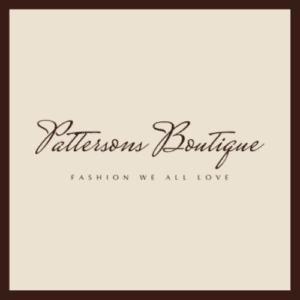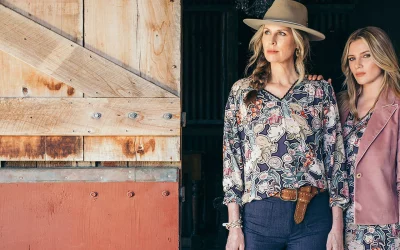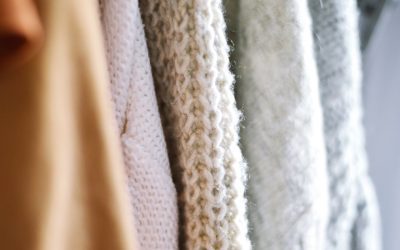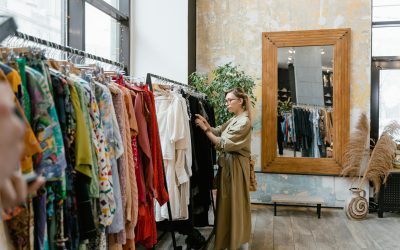Fashion Forward, Planet Friendly: A Guide to Stylish Womens Clothing with a Purpose
Sustainable fashion has become increasingly important in recent years, as the fashion industry’s impact on the environment has come under scrutiny. The need for change is evident, considering the significant resource depletion, pollution, and labor exploitation associated with clothing production. As a response to these challenges, sustainable fashion has emerged as a movement that promotes responsible production and consumption practices.
The growing interest among consumers in eco-friendly clothing options reflects a desire to align personal style choices with environmental and ethical values. People are becoming more conscious of the impact of their fashion choices and are seeking ways to reduce their carbon footprint while still maintaining a stylish wardrobe. Sustainable fashion offers a solution that allows individuals to make a positive impact on the planet without compromising on style.
For instance, brands like Stella McCartney have made significant strides in incorporating sustainable practices into their collections. Stella McCartney is known for its commitment to using sustainable materials and ethical production practices. The brand utilizes innovative alternatives to conventional fabrics, such as regenerated cashmere and biodegradable materials. By embracing sustainability, Stella McCartney demonstrates that fashion can be both planet-friendly and fashion-forward.
Benefits of Choosing Sustainable Fashion
The decision to choose sustainable fashion goes beyond personal style preferences. Opting for eco-friendly clothing brands offers numerous benefits, not just for individuals but also for the environment and society as a whole. Firstly, choosing sustainable fashion supports a more eco-friendly and ethical lifestyle. By prioritizing responsible production practices, such as minimizing waste and reducing water consumption, sustainable fashion reduces the industry’s environmental impact. This, in turn, contributes to the conservation of natural resources and the reduction of pollution.
Moreover, sustainable fashion promotes the use of sustainable materials and fair labor practices. Brands that prioritize organic and natural fabrics, like organic cotton and hemp, are making a conscious effort to reduce the use of harmful chemicals in clothing production. These fabrics have a lower environmental impact compared to conventional textiles, as they are produced without the use of pesticides and synthetic fertilizers. By choosing clothing made from sustainable materials, consumers can support sustainable farming practices that prioritize soil health and biodiversity.
Additionally, sustainable fashion brands often prioritize fair labor practices and transparency in their supply chains. They ensure that workers receive fair wages, safe working conditions, and are not subjected to exploitative practices. By supporting these brands, consumers contribute to a more just and equitable fashion industry, where workers’ rights are respected and upheld.
For example, Patagonia is a brand that exemplifies the benefits of choosing sustainable fashion. Patagonia is known for its commitment to sustainability and ethical practices. They prioritize using organic and recycled materials in their clothing, reducing their environmental footprint. Patagonia also ensures fair labor practices throughout their supply chain, promoting workers’ rights and social responsibility. By supporting brands like Patagonia, consumers can make a positive impact on the fashion industry and contribute to a more sustainable future.
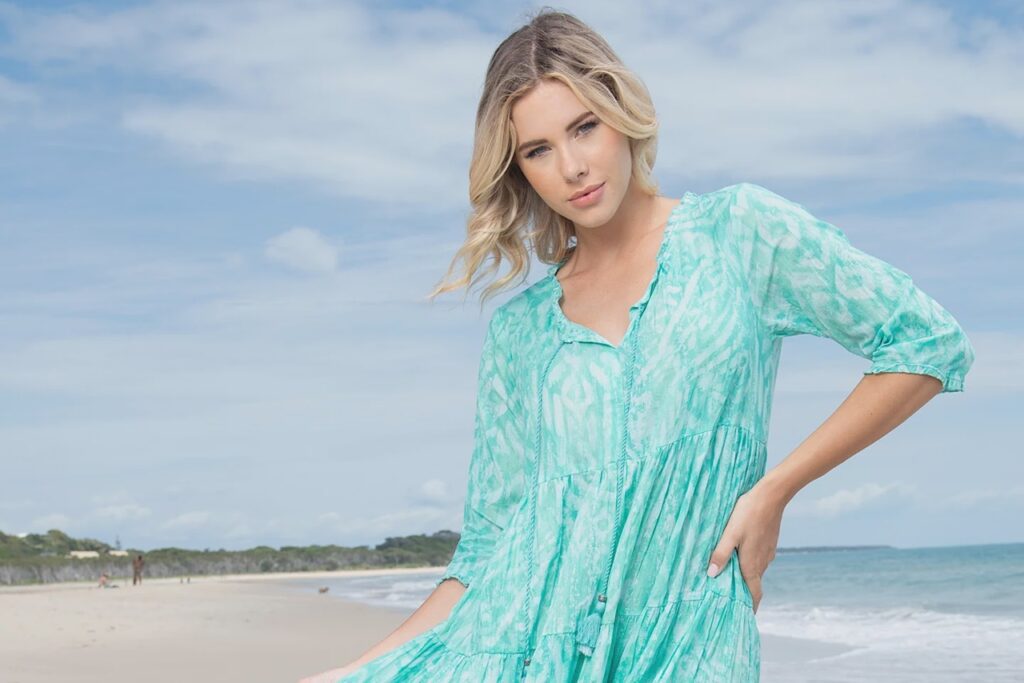
Identifying Eco-Friendly Clothing Brands
Identifying eco-friendly clothing brands can be a challenge, considering the greenwashing prevalent in the industry. However, there are key factors to consider that can help consumers make more informed choices. Firstly, look for brands that prioritize the use of organic and natural fabrics in their collections. These materials have a lower environmental impact compared to conventional fabrics, as they are produced without the use of harmful chemicals and pesticides. By choosing brands that prioritize organic textiles, consumers can make a positive impact on the environment and promote healthier ecosystems.
Transparency is another crucial factor when identifying eco-friendly clothing brands. Look for brands that have transparent supply chains and clear carbon goals. This indicates a commitment to sustainability and responsible business practices. Brands that disclose information about their production processes and materials used demonstrate accountability and a willingness to be held to higher standards.
In addition to organic materials and transparency, consider supporting brands that promote diversity, equity, and inclusion. The fashion industry has historically been criticized for its lack of representation and inclusivity. By choosing brands that prioritize diversity, consumers can contribute to a more inclusive and equitable fashion industry. Look for brands that feature a diverse range of models and showcase a commitment to inclusive marketing and hiring practices.
One example of an eco-friendly clothing brand is Pact. Pact is known for its organic cotton basics and commitment to sustainability. They prioritize using organic cotton, which is grown without the use of harmful chemicals and pesticides. By choosing Pact, consumers can support a brand that offers affordable and stylish options while minimizing their environmental impact.
Building a Sustainable Wardrobe: Tips and Strategies
Building a sustainable wardrobe is an essential step in embracing sustainable fashion. By adopting sustainable practices, individuals can reduce waste, promote longevity, and make conscious fashion choices. One key strategy is to emphasize quality over quantity. By investing in high-quality pieces that are made to last, consumers can reduce the need for frequent replacements and ultimately minimize waste. Additionally, focusing on versatile and timeless clothing choices can ensure that items can be worn for multiple occasions and seasons, extending their lifespan.
Incorporating secondhand options into a wardrobe is another effective strategy. Thrifting, shopping at consignment stores, or participating in clothing swaps are all great ways to give pre-loved clothing a second life. By choosing secondhand clothing, individuals can reduce the demand for new clothing production and contribute to the circular economy.
Renting clothing is also gaining popularity as a sustainable alternative to traditional shopping. Rental platforms allow individuals to borrow clothing items for a specific period, reducing the need for new purchases and promoting clothing sharing. This approach is particularly useful for special occasions or trendy items that may have a short lifespan in one’s wardrobe.
For example, Rent the Runway is a popular clothing rental platform that offers a wide range of designer clothing and accessories for rent. By renting instead of buying, individuals can enjoy fashion-forward pieces without long-term commitment and contribute to a more sustainable fashion ecosystem.
The Role of Organic Textiles in Sustainable Fashion
Organic textiles play a crucial role in sustainable fashion. Choosing organic fabrics for clothing production reduces the use of harmful chemicals and pesticides, benefiting both the environment and human health. Organic cotton, for example, is grown without the use of synthetic fertilizers and pesticides, promoting healthier ecosystems and reducing the risk of water pollution. By choosing clothing made from organic textiles, consumers can support sustainable farming practices that prioritize soil health, biodiversity, and worker well-being.
In addition to organic cotton, other organic materials like hemp are gaining popularity in sustainable fashion. Hemp is a versatile and sustainable plant that requires minimal water and pesticides to grow. It is known for its durability and strength, making it an excellent choice for clothing production. By choosing clothing made from organic textiles such as organic cotton and hemp, consumers can contribute to a more sustainable fashion industry and reduce their environmental impact.
For instance, brands like Outerknown prioritize organic materials in their collections. Outerknown, founded by professional surfer Kelly Slater, offers clothing made from organic cotton and other sustainable materials. The brand aims to protect the environment and promote fair labor practices throughout its supply chain. By choosing brands like Outerknown, consumers can support sustainable fashion and make a positive impact on the planet.
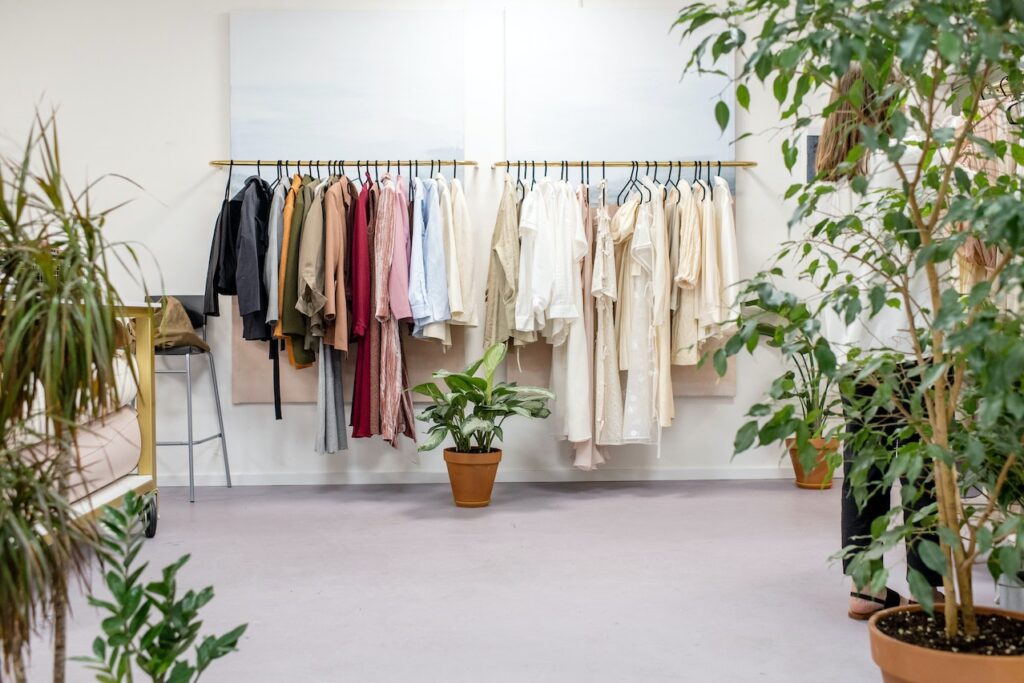
Making Eco-Conscious Choices When Shopping for New Clothes
When shopping for new clothes, making eco-conscious choices is essential to support sustainable fashion. There are several factors to consider to ensure that the clothing items align with personal values and contribute to a more sustainable future. Firstly, consider the materials used in the clothing. Look for brands that prioritize eco-friendly materials, such as organic, recycled, or upcycled fabrics. These materials reduce the environmental impact associated with clothing production and promote the efficient use of resources.
Ethical production practices are another crucial aspect to consider. Look for brands that prioritize fair trade and worker rights throughout their supply chain. Brands that ensure safe working conditions and fair wages contribute to a more equitable fashion industry. By supporting these brands, consumers can make a positive impact on the lives of garment workers and promote social responsibility.
Certifications and eco-friendly initiatives are also worth considering when shopping for sustainable clothing. Look for brands that have sustainability certifications, such as GOTS (Global Organic Textile Standard) or Fair Trade certifications, as these indicate a commitment to sustainability and ethical practices. Additionally, brands that implement eco-friendly initiatives, such as reducing water consumption or implementing renewable energy sources, demonstrate a dedication to minimizing their environmental impact.
For example, Amour Vert is a brand that embodies eco-conscious choices. Amour Vert offers stylish and eco-friendly clothing for women. The brand uses sustainable materials like organic cotton and TENCEL™ in their collections and implements various initiatives to reduce their environmental footprint, such as planting trees for every purchase made. By choosing brands like Amour Vert, consumers can make fashion choices that align with their values and contribute to a more sustainable future.
Exploring Alternatives to Fast Fashion
Fast fashion, characterized by its rapid production and consumption cycles, has been a significant contributor to textile waste and pollution. However, sustainable alternatives to fast fashion are emerging, offering consumers more mindful and eco-friendly options. Slow fashion is one such alternative that encourages mindful consumption and prioritizes quality over trends. By adopting slow fashion practices, individuals can build a wardrobe that lasts longer, reducing the need for frequent purchases and minimizing waste.
Furthermore, upcycled and circular fashion are gaining traction as sustainable alternatives to traditional fashion. Upcycled fashion involves repurposing discarded materials into new clothing items, giving them a new lease of life. Brands like Christy Dawn and Bel Kazan specialize in using deadstock or vintage fabrics to create unique and sustainable designs. By supporting upcycled fashion brands, consumers can contribute to waste reduction and promote creativity in design.
Circular fashion aims to close the production loop and minimize waste. Brands like Amour Vert and Stella McCartney have embraced circularity in their practices. They implement recycling and upcycling initiatives, extend the lifespan of garments through repair and resale programs, and prioritize the use of recycled materials in their collections. By embracing circular fashion, consumers can actively participate in the sustainable fashion movement and contribute to a more circular economy.
Popular Ethical Fashion Brands
Ethical fashion brands have gained recognition for their commitment to sustainability, transparency, and fair labor practices. These brands prioritize using organic and natural fabrics, have clear carbon goals, and promote diversity, equity, and inclusion. By supporting ethical fashion brands, consumers can make a conscious choice to contribute to a more sustainable and equitable fashion industry.
MATE the Label is an example of an ethical fashion brand that has made significant strides in the industry. MATE the Label specializes in eco-friendly and ethical loungewear and basics for women. The brand prioritizes using organic materials and supports fair labor practices throughout its supply chain. Additionally, MATE the Label promotes inclusivity and diversity by featuring models of different backgrounds and body types. By choosing brands like MATE the Label, consumers can support ethical fashion and promote positive change in the industry.
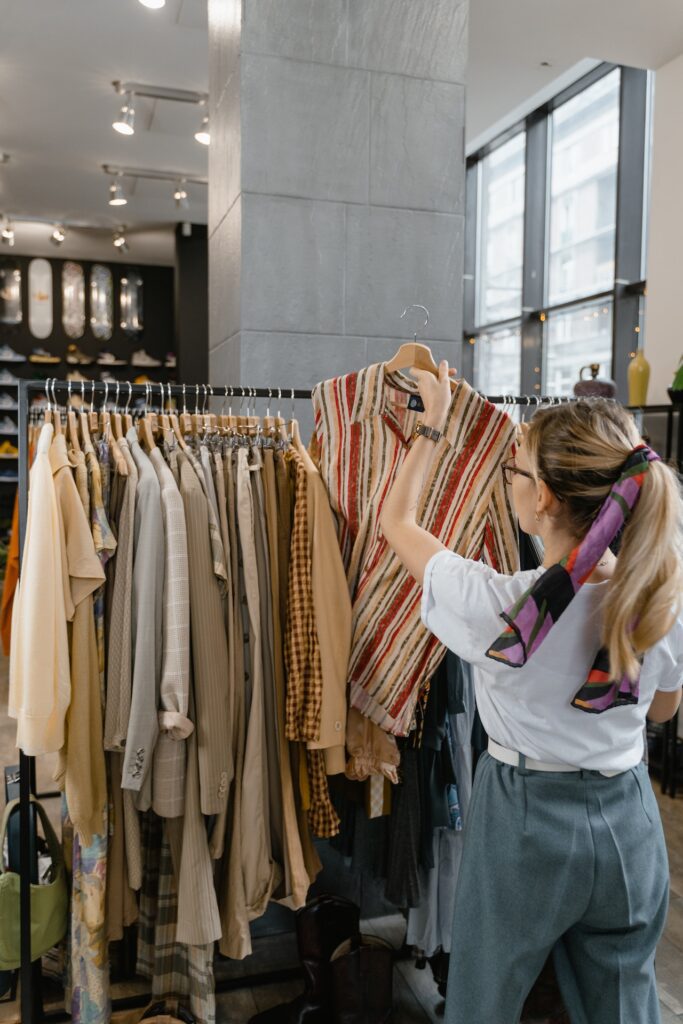
Embracing Upcycled Fashion
Upcycled fashion offers a unique and sustainable approach to clothing production. By repurposing discarded materials and giving them a new life, upcycled fashion reduces waste and promotes creativity in design. Brands like Christy Dawn and Bel Kazan specialize in using deadstock or vintage fabrics to create one-of-a-kind clothing items. These brands demonstrate that sustainable fashion can be fashion-forward and stylish.
Christy Dawn, for example, creates bohemian-inspired dresses using deadstock fabrics. Deadstock refers to excess fabric that would otherwise be discarded by larger fashion brands. By utilizing deadstock, Christy Dawn reduces waste and gives these materials a second chance. Bel Kazan, on the other hand, offers unique and sustainable designs inspired by global cultures. By repurposing vintage fabrics, Bel Kazan creates clothing items that are both fashionable and eco-friendly. By embracing upcycled fashion brands, consumers can contribute to waste reduction and support innovative approaches to clothing production.
Understanding Circular Fashion
Circular fashion is a concept that aims to close the production loop and minimize waste. It focuses on recycling, upcycling, and extending the lifespan of garments. Brands like Amour Vert and Stella McCartney have embraced circularity in their practices. They implement initiatives such as recycling programs, repair services, and resale platforms to ensure that clothing items have a longer life cycle.
Amour Vert, for instance, offers stylish and eco-friendly clothing for women. The brand utilizes recycled materials, implements a take-back program, and partners with organizations to plant trees for every purchase made. Stella McCartney, a luxury brand committed to sustainability, emphasizes the use of recycled materials and implements a circular approach in its collections. By understanding circular fashion and supporting brands that embrace this concept, consumers can actively contribute to a more sustainable and circular fashion industry.
Caring for Sustainable Clothing
Proper care of sustainable clothing is essential to ensure their longevity and minimize the need for replacements. By following garment care instructions and adopting sustainable care practices, individuals can make their clothing items last longer and reduce waste. Simple actions like washing clothing in cold water, air drying instead of using a dryer, and avoiding excessive washing can help maintain the quality of sustainable garments.
Repairing, mending, or altering clothing is another approach to extend their lifespan. By embracing these practices, individuals can fix minor damages, update the style of a garment, or modify it to fit their changing needs. These actions not only contribute to waste reduction but also promote creativity and individuality in personal style.
For example, Pact, an eco-friendly clothing brand, offers organic cotton basics that are designed to be long-lasting. To care for their clothing, Pact recommends washing in cold water and air-drying to reduce energy consumption and extend the lifespan of the garments. By adopting sustainable care practices, consumers can actively contribute to the longevity of their clothing items and minimize their environmental impact.
Conclusion: Embrace Sustainable Fashion for a Stylish and Conscious Lifestyle
Sustainable fashion offers a way to express personal style while supporting the environment and promoting ethical practices. By choosing eco-friendly clothing brands, individuals can contribute to a more sustainable fashion industry that prioritizes responsible production and consumption. Incorporating sustainable practices into wardrobe choices, such as emphasizing quality over quantity and embracing secondhand options, can reduce waste and promote a more conscious approach to fashion.
It is crucial to consider the materials used, the production practices employed, and the values upheld by clothing brands when making fashion choices. Brands like Orientique, Pact, and Amour Vert are known for their ethical practices and commitment to sustainability. These brands prioritize organic and natural fabrics, promote fair labor practices, and implement initiatives to reduce their environmental impact. By supporting these brands, individuals can make a positive impact on the fashion industry and contribute to a more sustainable and conscious lifestyle.
In conclusion, sustainable fashion is not just a trend but a necessary shift in the fashion industry. By embracing sustainable fashion, individuals can make a meaningful contribution to the protection of the planet and the well-being of workers in the fashion supply chain. Explore Patterson’s Boutique, a women’s online clothing store in New Zealand, for a wide selection of sustainable, stylish clothing options. Patterson’s Boutique offers a range of brands that prioritize ethical and eco-friendly practices, allowing individuals to build a purposeful wardrobe that aligns with their values and personal style. Visit Patterson’s Boutique to discover fashion-forward, planet-friendly options for a conscious and stylish lifestyle.


